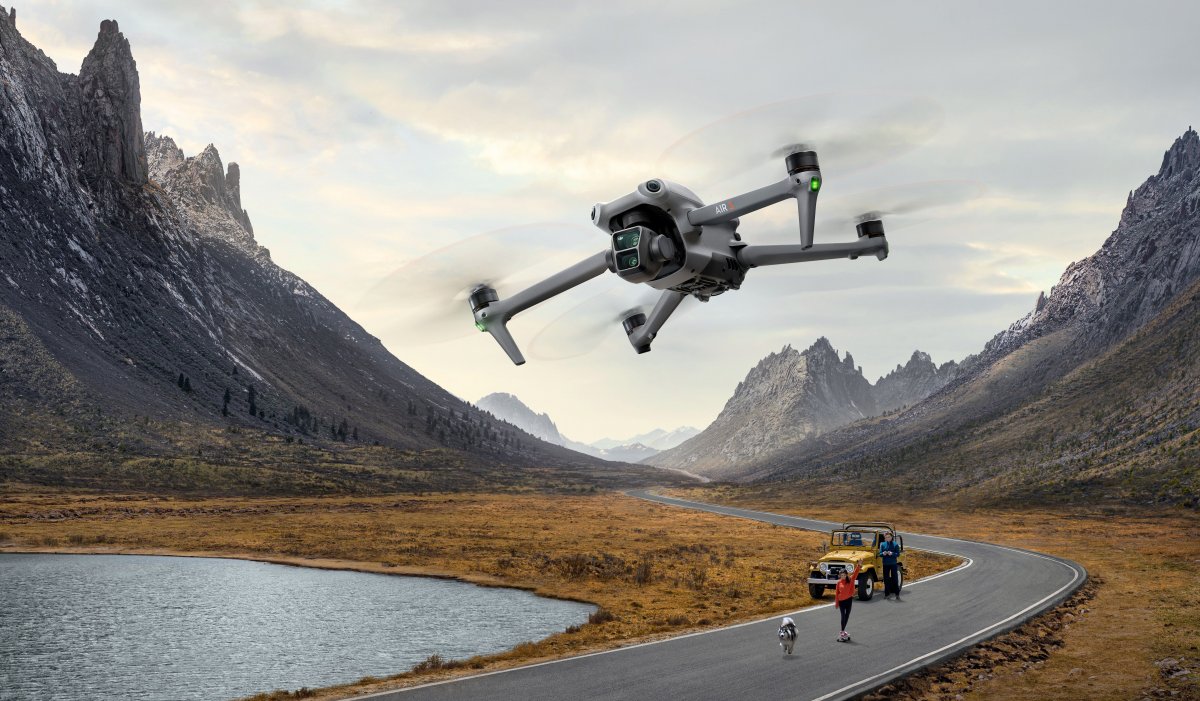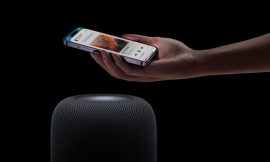DJI has announced the release of its new Air 3 drone, equipped with a second camera. This follows the company’s launch of the DJI Mavic 3 Pro, which featured three optical cameras. The Air 3 is the first model in the Air series to support vertical recording in 2.7K for social media platforms. It also boasts an increased flight time of up to 46 minutes and omnidirectional obstacle detection.
With the addition of the second camera, the weight of the drone has increased from 600 grams to 720 grams. The Air 3 has been given a C1 label in the European Union, allowing it to fly close to people without maintaining a minimum distance of 150 meters to residential and commercial areas.
The two cameras on the Air 3 use a 1/1.3-inch CMOS sensor. The wide-angle model has a 35mm equivalent focal length of 24mm with a fixed aperture of f/1.7, while the telephoto camera uses 70mm with an aperture of f/2.8. The drone can record HDR videos in 4K at up to 60 frames per second, with the ability to capture slow motion recordings without cutting off the field of view.
The cameras also support a 10-bit color mode called “D-Log-M,” which promises more highlights and shadow details in recordings. HDR images are stored in HDR DNG format for easier post-processing. Dual Native ISO allows for switching between two camera sensitivity levels, although the exact values have not been specified. The Air 3 can capture photos with a resolution of up to 48 megapixels.
In terms of flight characteristics, the Air 3 is the first model in the Air series to feature omnidirectional obstacle detection. This allows it to recognize and avoid obstacles in all directions. The drone also includes intelligent flight modes, such as “FocusTrack” for seamless tracking of a subject, “MasterShots” for autonomous flight modes, and “QuickShots” for predefined flight modes. It also has a “Hyperlapse” feature for recording time-lapse videos. New tilt-shift effects allow users to create miniature or toy-like recordings.
The Air 3 has an increased flight time of up to 46 minutes compared to its predecessor in the Air series. It also offers a battery charging station with a function to transfer remaining power from multiple batteries to the one with the highest remaining power. The drone has a transmission range of up to 20 km in the FCC area and 10 km in the CE area, thanks to the O4 video transmission system. The live image from the drone is transmitted in 1080p at 60 frames per second.
The DJI Air 3 will be available from July 25th, with a starting price of 1100 euros for the model including the DJI RC-N2 remote control. The “Fly More Combo” package, which includes additional accessories, will be available for 1350 euros or 1550 euros with the remote control DJI RC 2.



